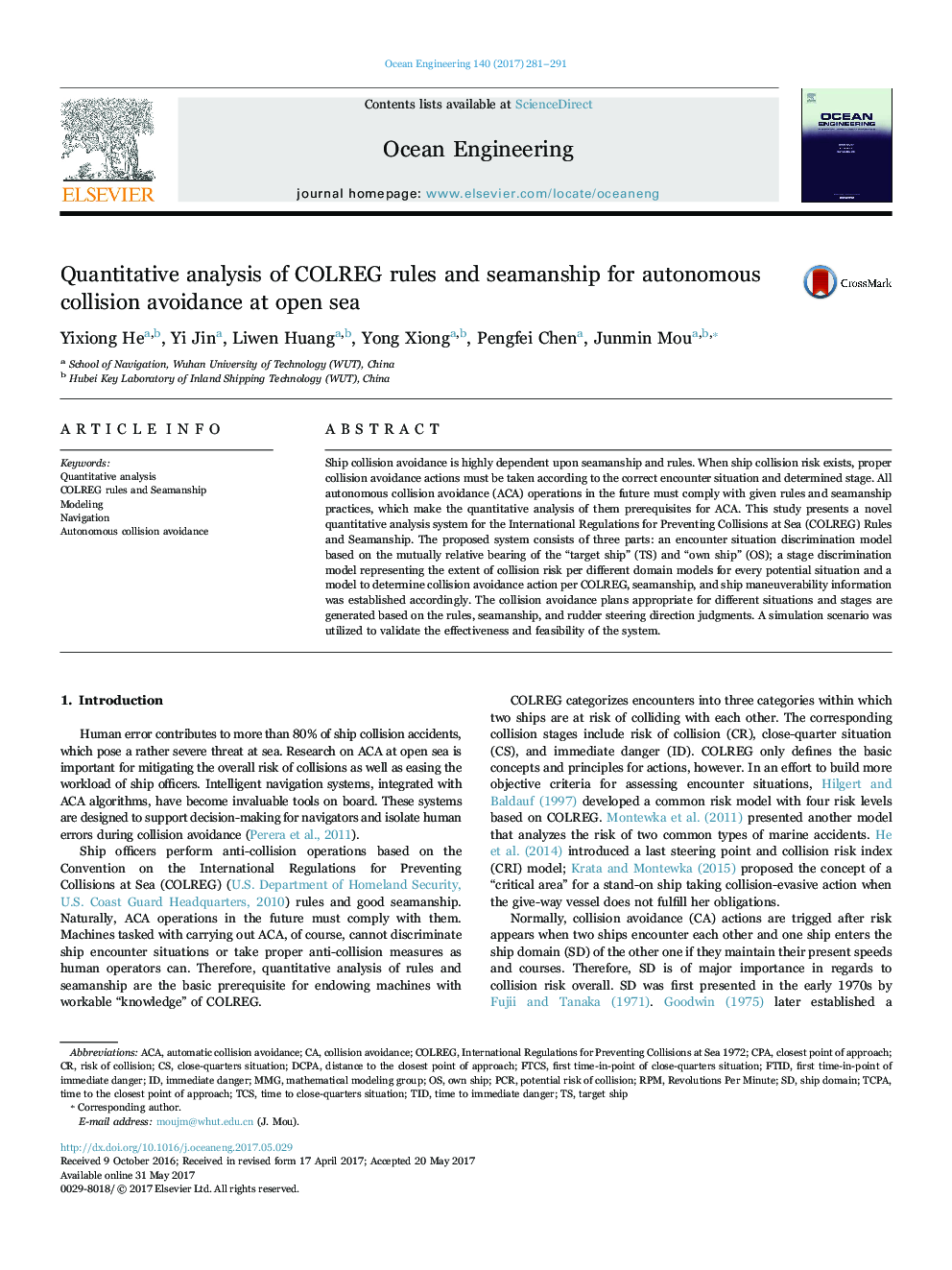| Article ID | Journal | Published Year | Pages | File Type |
|---|---|---|---|---|
| 5474150 | Ocean Engineering | 2017 | 11 Pages |
Abstract
Ship collision avoidance is highly dependent upon seamanship and rules. When ship collision risk exists, proper collision avoidance actions must be taken according to the correct encounter situation and determined stage. All autonomous collision avoidance (ACA) operations in the future must comply with given rules and seamanship practices, which make the quantitative analysis of them prerequisites for ACA. This study presents a novel quantitative analysis system for the International Regulations for Preventing Collisions at Sea (COLREG) Rules and Seamanship. The proposed system consists of three parts: an encounter situation discrimination model based on the mutually relative bearing of the “target ship” (TS) and “own ship” (OS); a stage discrimination model representing the extent of collision risk per different domain models for every potential situation and a model to determine collision avoidance action per COLREG, seamanship, and ship maneuverability information was established accordingly. The collision avoidance plans appropriate for different situations and stages are generated based on the rules, seamanship, and rudder steering direction judgments. A simulation scenario was utilized to validate the effectiveness and feasibility of the system.
Keywords
Related Topics
Physical Sciences and Engineering
Engineering
Ocean Engineering
Authors
Yixiong He, Yi Jin, Liwen Huang, Yong Xiong, Pengfei Chen, Junmin Mou,
